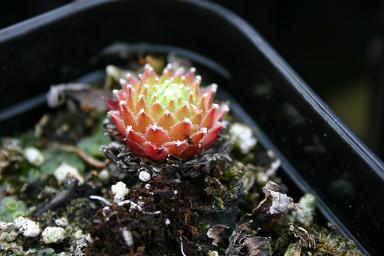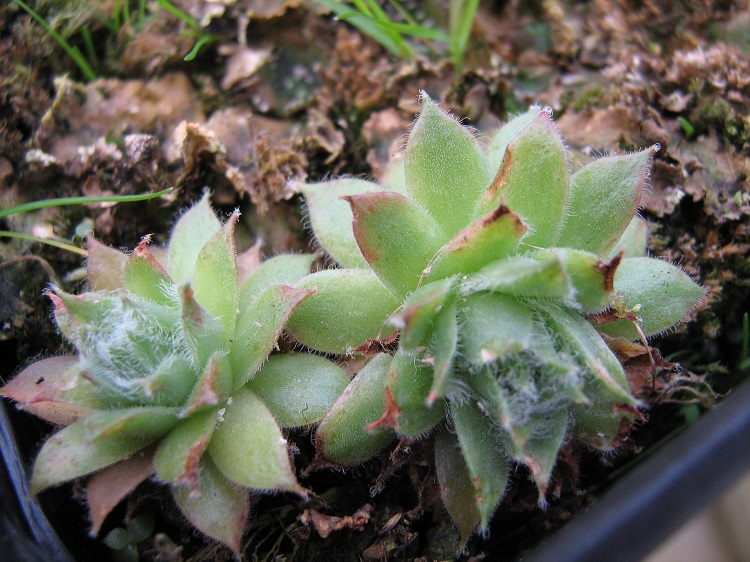The Llifle encyclpedia of Succulents online says:
"Sempervivum tomentosum (Woolly Houseleek) is a unusual heavily white-webbed form and one of the most ornamental species of Sempervivum.
Resembles Sempervivum arachnoideum, but has larger rosettes which are strongly flattened above. Flowers, in summer; bright rose-colour.
The plants are succulent and are able to grow or thrive with minimal water or rainfall, and can survive for long periods of time without any water.
Rosettes: 1.5-3.5(-4) cm in diameter, each rosette is larger, flatter and more compact than in Sempervivum arachnoideum, and may have up to 50-60 leaves.
The tips of the leaves are connected together by a very fine webbing that looks just like cobwebs. Some are very furry other slightly furry.
Green with and undercolour of dark red in spring there are also types that are more red or maroon. Offsets almost stalkless crowded.
Leaves: Like those of Sempervivum arachnoideum, but somewhat shorter, more obovate-cuneato, furnished with numerous white cobweb-like hairs,
which are fewer in the autumn and when the plant is grown in the shade.
Flowers: Pink or rose-red (usually) but also white or bright-red about 1-2.5 cm across with 9-12 petals.
Flowers are raised on thick 7-20 cm tall stems and hermaphroditical (having both male and female reproductive organs).
The rosette that bloomed then dies after setting seeds."
In November 1979 it was given an Award of Merit when shown by the Director of Kew. Writing about the awarded plant, Barry Starling says:
"The Cobweb Houseleek has been in our gardens for at least three centuries, thriving in situations which often prove far too dry for many alpines.
It has a fairly wide distribution through Southern Europe, but the sub-species S. a. tomentosum tends to inhabit the S.W. end
of this range of distribution, particularly in the Spanish Pyrenees at up to 4000m, where its rosettes can be found so liberally endowed
with gossamer-like hairs that the leaves below are almost hidden.
In this sub-species the rosettes tend to be larger than the type, that is, up to 2.5cm diameter, flattish and more densely hairy.
The five to fifteen flowered inforescence of rose-red, star-like flowers emerges from the top of a 10cm. long, feshy stem clothed with
succulent but hairy leaves.
Flowers are borne in July but the tightly packed mass of rosettes remains attractive throughout the year and is often to be seen grown
most effectively in stone sinks, troughs or clay pans. The plant submitted to the Joint Rock Garden Plant Committee gained its
Award of Merit as a foliage plant.
Single rosettes are easily removed to start a new colony, readily establishing themselves in sandy soil. Propagation from seed of cultivated
plants is best avoided as S. arachnoideum and its forms are known to hybridise readily with other species and hybrids common to gardens."
|



